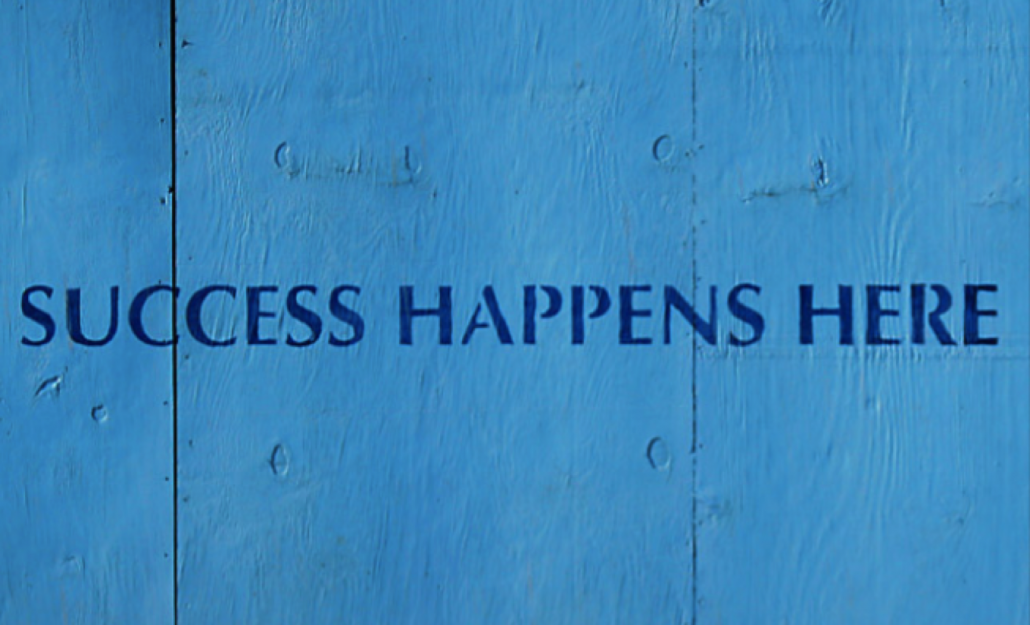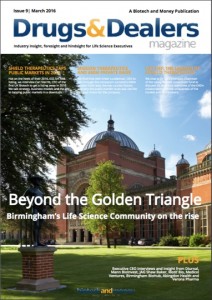Creating the Win Win Win: Anatomy of an IPO
Quality sites
- Online Casinos UK
- Casino Non Aams
- Casinos Not On Gamstop
- UK Casinos Not On Gamstop
- Best UK Casinos Not On Gamstop
- Casino Sites Not On Gamstop
- Casino Sites Not On Gamstop
- Casino Sites Not On Gamstop
- Non Gamstop Casino Sites UK
- Non Gamstop Casinos
- Best Online Casino Canada
- Casino Sites Not On Gamstop
- Non Gamstop Casino UK
- UK Online Casinos Not On Gamstop
- Best Slot Sites 2025
- Casinos Not On Gamstop
- Meilleur Casino En Ligne
- Non Gamstop Casinos
- Slots Not On Gamstop
- Non Gamstop Casino
- New Online Casinos Not Registered With Gamstop
- Casino Non Aams Sicuri
- Casino Sites UK Not On Gamstop
- Casino Non Aams Italia
- Bitcoin Casino
- Meilleur Site Casino En Ligne Belgique
- Casino App
- Migliori Siti Scommesse Non Aams
- Meilleur Casino En Ligne De France
- Nouveau Jeu Casino En Ligne
Horizon Discovery secured £68.6m to fuel global growth through an IPO in March 2014 on London’s AIM. Here the men behind the float share their story, lessons and secrets to the success.
Speakers:
Dr Darrin Disley, CEO, Horizon Discovery Group, (DD) Richard Vellacott, CFO, Horizon Discovery Group (RV) and Freddy Crossley, Director, Investment Banking, Panmure Gordon (FC)
DD: So what we’re talking about today is the win, win, win. I think business is actually a lot simpler than people make it out to be. You make something for X, you sell it for a multiple of X. Your business is about customers, not you.
The businesses that go best in my view are the ones that create the win, win, win: a triple alignment between founder/shareholders, tech transfer offices and investors, and delivers return directly in proportion to risk taken. I think for me the success of Horizon is not about how much funds you’ve raised, because that can vary depend on when times are good and times are bad etc…
Sometimes you get lucky with timing, I think we probably did that. But it was actually from IP to IPO in 6 years and 1 day, how we were able to maintain those alignments of interest, return capital as a pre-IPO company to early shareholders.
When it came to the IPO, yes people made a big exit as well, but it was the returns of 2 to 40X, which is the range that people got in Horizon, were returned in proportion to the risk taken by the people who participated in the company.
We’re an unusual biotech company in that we do products, we do services, and where we have intellectual property and knowledge in oncology research and drug discovery and development we’re able to leverage into that biotech value chain and get milestones and product royalties as well. But we’re focused very much on short term internal rate of return on that portfolio rather than the
traditional long term for biotechs. We’re aiming to power genomic research and personalised medicine.
Here are the quick facts. We raised our seed funding on March 26 2008, £150,000 from angel investors including myself, Jonathan Milner and University of Cambridge. Then we went to AIM on March 2014 and raised £68.6 million. We initially went to raise £25 million and the book was 7 times covered, so we were able to take a much larger amount of funding and place out £28.6 of old money.
Heavily subscribed as we say at the top of the range. The market cap was 120 the current market cap 180. The share price after some initial overhangs we had to clear where there was a drop in share price of about 20%, it’s now back up at 25% above its IPO price. During that period of last year it outperformed FTSE, AIM and NASDAQ market.
Why was it successful? If you look at our IP to IPO timeline, westarted in a pig shed in March 2008. We very much focussed on deploying genome editing. This was something that was very much in vogue now. Spark therapeutics raised £161million on NASDAQ with our technology, RAV, in gene therapy only in the last couple of days. But back in then the worst recession in a hundred years it was not the time to be expansive and think about how you’re going to change the whole healthcare paradigm. So we did what we could. We focussed on customers, generated revenues, we were profitable, break even in the first 3 trading years so that enabled us to build confidence in a really declining market. So investors were knocking on the door to invest in Horizon.
Coming to the other end, as we got to the business end we started to marry this growth in revenues around 6.6 million last year, consensus 11 million, we’ve reported 11.8 this year. Plus this milestone upside. We got into position to IPO on a very simple story. We called it the bread, butter and jam on top model. We’ve got a very complex business, those product services and leverage happen in every stage of drug discovery and development from DNA sequence to patient treatment and every stage in between. So we had to crystallise out a very simple story, and we’ll talk about the importance of messaging in a little bit.
But here was the success. It was about leveraging what we had at all stages. It enabled us to raise money on our own terms, so we were able to return £7 million to founders and early shareholders in the pre-IPO phase, and that was by secondary place outs when the venture capital eventually came into the business. We retained control of our business and developed the business that we wanted to with the expanse of vision that we wanted to.
I’m going to hand over to Richard who is going to talk about the key to the business which I think has been alignment of these shareholders.
RV: We call this the triple alignment. This is what we’ve worked very hard on since the inception of Horizon and it’s a combination of three things. First of all creating the business alignment, and that’s creating the right alignment of your leadership team, making sure everyone has the same ambition and vision for the company and how you’re going to go ahead and deliver that. It’s about building the visibility and predictability of your business, of your revenue streams and your investment decisions so you know you can manage the expectations of the public market and always try and outperform that. It’s about investor alignment, creating the aligned ambition between all of the key investors you have and making sure everyone is pulling in one direction there.
The IPO becomes a really important time of realignment of your investor base. Whereas you go through your VC rounds over a period of time, your interests can diverge. This is a great time to pull people back together again and get that realignment.
Then finally the one that is probably least under your control is the market alignment. We all know in biotech more than perhaps any other sector it’s very cyclical. So you have to be prepared and agile and be ready to go as soon as the window has opened. One of the great successes of the Horizon IPO which I think Freddy will talk about shortly is the execution time. It was the preparation of the business in advance to be ready to go when that window was open, and delivering in that time frame, a 3 month time frame.
Now one thing I would say just before we move on from that, if we’re able to go backwards. Is that this is not a Newtonian thing with the planets coming into alignment. This is an active management process so you have to physically go out there and lead the business to get this alignment in place.
Sometimes you need tough discussions to make these things happen. So it really takes quality leadership and management tocreate this triple alignment.
So we all know this phrase, the harder I work the luckier I get. Well we worked really hard to act as a quasi-public company in advance of the IPO so that we were ready to go when that window was open. We had our diligence data room ready and up to date through a succession of VC rounds and customer diligence exercises, so there was no major effort required to populate the diligence room. We ran a board as best we could with the public company mentality, producing the high quality information you need to make effective decisions as a board and we picked great advisors to work with, and again teeing up Freddy a little bit, I think the choice of your banker and broker is absolutely critical and Freddy’s team did an absolutely stellar job of de-risking the IPO up front with a pilot fishing exercise and then delivering against a very tight time frame.
DD: Can I just set Freddy up a little bit, because it was a real challenge that IP to IPO process. It was perfect alignment initially, as a scientific founder of the business, we had our tough discussions and we built this business the way we wanted to build it. But naturally when we brought venture capital in much later those misalignments started to appear, you’re almost pushing the problem further downstream by the way we ran business. It was very difficult to convince people who had only invested in the business for 18 months or 2/2.5 years to then go to an IPO when they hadn’t then necessarily taken the investment further down the line. It was really challenging and this is where I think Panmure did a great job for us. We went out to see 20 funds and we were able to convince our board with real data that our story could be told in a simple way with our market that the market was there for us.
So for us, scarcity value drove multiples. We did this pilot fishing, we created a buzz and we created unstoppable momentum in the IPO. After the first 2 or 3 days the book was well covered and so people were in order to get their allocations they put in larger orders etc… so that built up that 7 times oversubscription.
I think this is where Panmure really helped us in our view. There were two real decisions. Do we go very broad with our shareholder base or do we go very narrow, do we target a small number of cornerstones that take up the entire investment and then have quite a low liquidity company in the aftermarket that is susceptible to up and down swings on relatively small trading volumes. And we were actually persuaded by the approach that Panmure took to take a broad approach so we went out to see about 80 funds in 60 meetings, and we had over 60 orders in a very sort of broad shareholder base and I think that served us well in the long term.
FC: The first thing we did when we really got onto the IPO process with Horizon was to set up some pre-marketing meetings, because it’s a complex story. People needed to understand things that generalist investors wouldn’t necessarily be familiar with. So what we did, the first meeting I did was I took a large institutional investor up to see them in Cambridge, and from that one meeting we had an order of £10 million. We had a price done on that order and so we had immediately first meeting, we had established a pilot cornerstone institution that gave us… and the existing shareholders, a lot of confidence going into the IPO.
Suddenly it wasn’t a black box anymore, it wasn’t what the broker was saying going to be the price and the sort of appetite. We’d proved it out. So I think going into an IPO make sure that pre-marketing happens. As Darren said we did 20 pre-marketing meetings, so it was very widely pre-marketed. So before we went in there were no surprises.
The other thing that was remarkable about the Horizon IPO was the timetable we did it in as well. We say when we’re asked how long an IPO takes, it’s 4 to 6 months really. With Horizon we did it in under 3, we did it in just over 2 and a half months. That was the level and preparation that Richard and the management team at Horizon had put in place, but it was also down to the fact that they’d chosen good advisers, and I’m not just talking about Panmure as the nomad broker, but also the lawyers. There are so many companies that come to us and say we’re going into an IPO process, we’ve had our lawyers working with us for years and years, and we want to use these guys. And what we say is actually what you want is some capital market lawyers who know what they’re doing, and it’s absolutely fundamental to get the right advisory team in place. Because I think if we hadn’t have done that the under 3 month schedule would have been harder. At that stage that schedule was very important because there was a window there and I think we took it.Some other key lessons: make sure the management team’s presentation is spot on. Get that presentation right. Make sure the presentation encapsulates the investment case from the off, because that’s the document you’re going to use going forward and also make sure you get the right analyst as well, someone who can do a real deep dive into the science and present the investment case as Mike Mitchell did at the case of the IPO is important as well and get the right advisors on side early on.
DD: So what has the IPO done for us? I mean I’m someone who has always worked in the private company sector, and I wasconcerned about being a public company CEO. I was concerned about all sorts of things people tell you about it. It was actually the best thing this company has ever done, not just because it could raise lots of money. I like having a board where you can actually sit and talk about real strategy of the business and aligning the interest of the company and how you manage market expectations. The vested interests are not in the company, whether it’s private investors or institutional investors etc. they’re on the outside of the company and you can bring in experts that can actually really help.
The second is the availability of capital. Since the IPO we’ve had an organic plan in combination with an M&A strategy, so we’ve made 3 acquisitions. One from a company previously listed on NASDAQ. One was our biggest competitor, Sigma Advance Genetic Engineering and then recently a company in Vienna called Haplogen Genomics. It’s enabled us very rapidly to put this capability from sequence to treatment together, plus drive scale in our revenues. Then by delivering on what we say, and we have now reported on our pre-close at least and we’re 7% ahead of expectations, that we now can build that confidence so if we need more capital for example we could go back to the market and it wouldn’t be a 6 month process to do that. You wouldn’t constantly be on the road you can access that capital you need to drive scale into the business.
So for us it’s been a very enjoyable experience. But I would want to re-iterate one thing, that when you go into this process you spend a lot of time with your brokers and advisers etc… so pick them well.
This isn’t just a plug for Freddy, you’ve got to want to work with the people every day. You pick your founders, you pick your management team. But these people you kind of don’t know them that well, and you do spend an awful lot of time with them, so make sure you pick them wisely and you actually want to look at their face in the morning.
Additional group discussions from the event, plus interviews, insights and articles, can be found in the latest edition of our Drugs & Dealers magazine.





Leave a comment